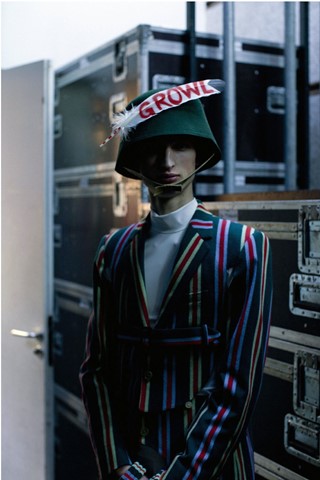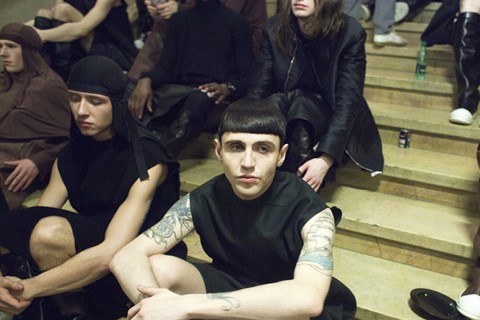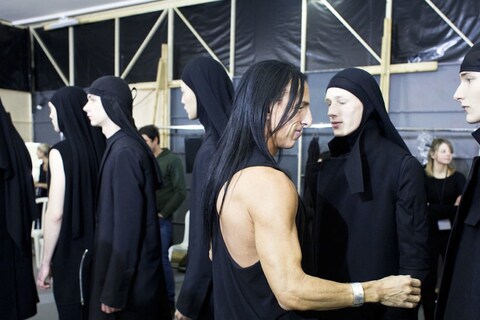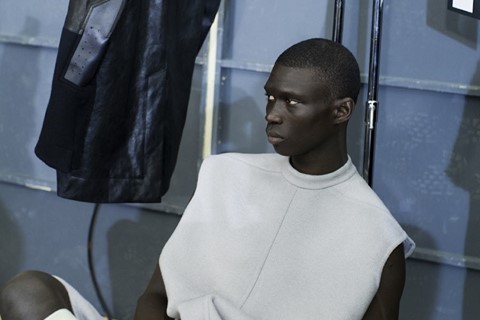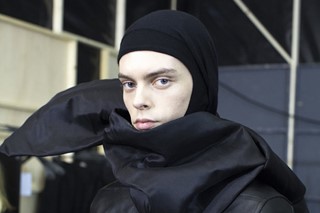From gay marriage protests and wars on racism to meditations on biopiracy, Marta Represa considers political movements in the recent men's and women's collections
Can fashion have a political conscience? The question is a recurring one, and the answers are all too often clichéd. Examples of the industry’s insensitivity and lack of sympathy (or knowledge) towards social and political realities surface regularly in the media, and stories about blackface editorials and articles praising the “beauty” and “philanthropy” of the wives of Middle East dictators make the movie Zoolander look like a realistic take on the fashion world. However (and contrary to popular belief) fashion is just as often used as a social commentary. When, in 1906, Paul Poiret freed women from the corset, the couturier was immediately hailed as a pioneer of the Women’s Liberation Movement. From Mainbocher to Yohji Yamamoto, designers have used their collections as outlets for socio-political commentary, and today’s talents are no exception. In an ultra-connected world where news goes instantly global thanks to the Internet, it has become impossible for designers to ignore their political conscience.
"In an ultra-connected world where news goes instantly global thanks to the Internet, it has become impossible for designers to ignore their political conscience"
The political movement in fashion proved especially strong during the autumn/winter 2014 shows, as designers conveyed their activism through the catwalk. In tune with Steve McQueen’s film Twelve Years a Slave, Walter Van Beirendonck made a strong statement against racism using impressive feather headdresses designed by Stephen Jones and marked with the words “stop racism”. They were interspersed with helmet-like felt hats and worn with multicoloured striped blazers and trousers, ivy-league outfits gone psychedelic. “We need to go to war on racism”, said the Belgian designer backstage. Turkish-born Umit Benan was also inspired by an African-American hero: Jackie Robinson, the first player to break the colour barrier in Major League Baseball. At his show, the elegantly dressed models (Robinson was renowned for his allure, and Benan is quickly building a reputation as a master tailor) initially walked down the catwalk with baseball mitts held over their faces, a theatrical comment on the racism that rendered players invisible to the major leagues in the first half of the 20th century. At the end of the show, the designer himself came out holding a banner saying “no to racism for the love of the game”. The message couldn’t have been any clearer.
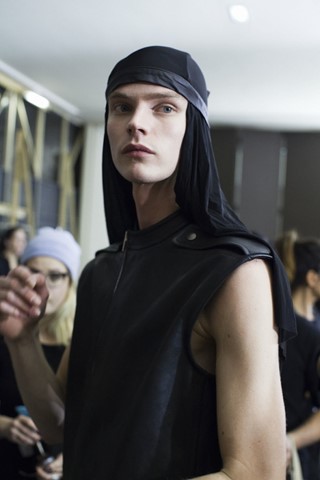
Through a surprisingly understated show, Rick Owens made an obscure comment on dominance and submission, on authority and its rejection. He was inspired by moody cops, the emblems of an authority that millions of youths rebel against. “Suddenly you’re 50 and you’re the authority”, considered the designer. His collection was full of symbolism: black leather and heavy boots referenced the brutal, abusive authority while the delicate cashmere hoods made the models somewhat reminiscient of benevolent nuns and the duchess satin onesies strategically zipped in the backside left a lot to the (fetishist) imagination.
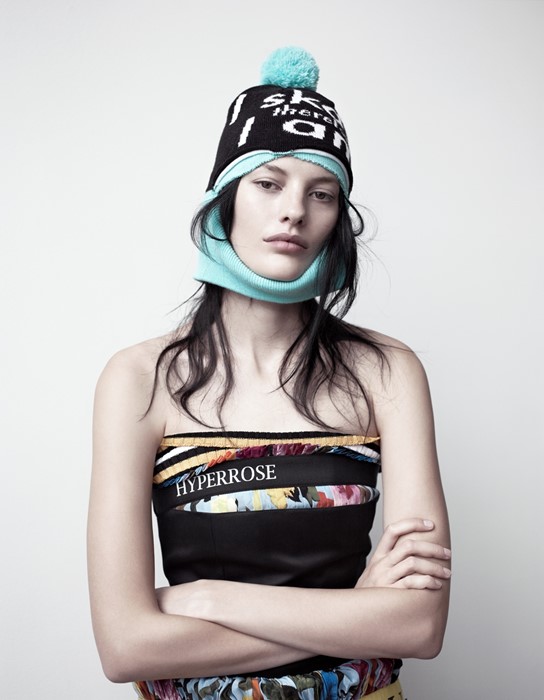
Rebellion against authority, especially as epitomised by the Russian collective Pussy Riot, was the inspiration for many womenswear designers too. In the latest issue of AnOther Magazine themed around fearlessness, there is a feature on the new Pussy Riot documentary. "Precocious and loud they may be, picturesque news fodder they clearly are, but beyond this, Pussy Riot practice a thrilling, nuanced style of youth protest that ranks reason and educated debate as highly as noise," writes Tish Wrigley.
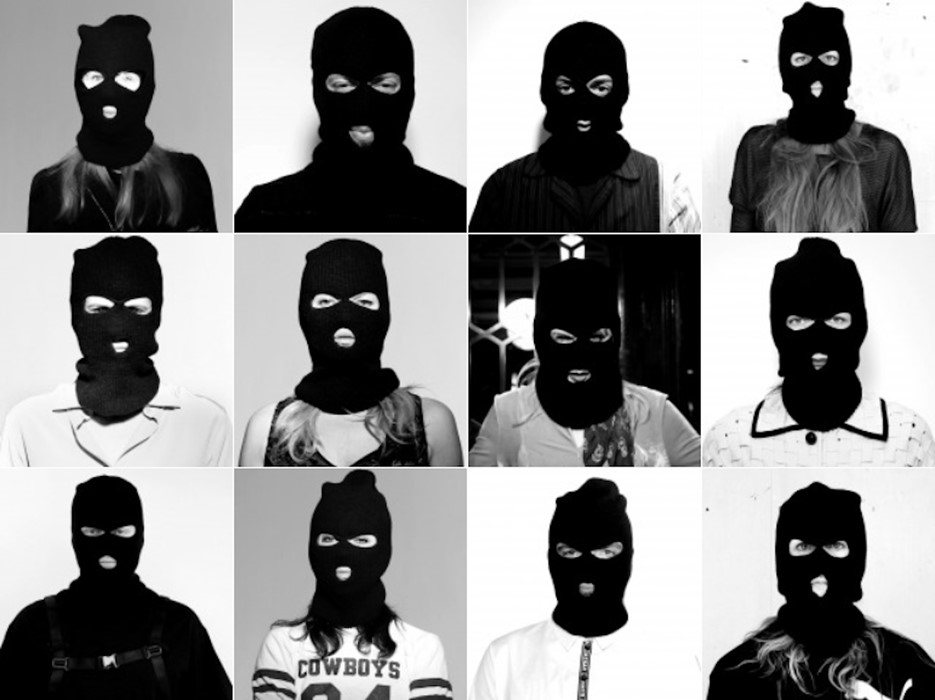
Pam Hogg was contacted by Amnesty International three weeks before Fashion Week with a request to give a nod to Pussy Riot at her show which was coinciding with the opening of the Russian games at Sochi. Her reaction was a colourful and joyous proclamation within her collection. “I’m not politically outspoken but I make statements regularly in my work”, said the designer. “I have a great admiration for Pussy Riot and fully support them in all the work I do, so it was a done deal even though I had no collection at that point as I had decided to take the season out. I hardly slept for three weeks but by the end of it I had a show completely dedicated to Pussy Riot, inspired by their exit from jail, still defiant and resolute. I called it Courage, and the theme was a celebration of gay culture.” In collaboration with SHOWstudio, Gareth Pugh also supported the Amnesty initiative during London Fashion Week and the Sochi Winter Olympics. Pugh invited the fashion industry to appear in mini video clips wearing balaclavas and presenting a film shot by Ruth Hogben – a meditation on the themes of chaos and control, illusion and propaganda, and the need for a unified response to Russia's recent actions.
Parisian associations against gay marriage make a point of regularly gathering outside menswear show venues – last season they had a demonstration before Thom Browne, who, in response, staged a wedding between two male models to the strains of All You Need is Love by the Beatles and this season the protest was before the flamboyant Saint Laurent show. Clearly the question of marriage equality remains controversial but designers don’t hesitate to make clear where they stand. For the finale of his show, Ashish Gupta dressed a model with a sequined rainbow T-shirt with the message “love will win”, which quickly turned into a Facebook and Twitter hashtag.
“I’m not politically outspoken but I make statements regularly in my work” — Pam Hogg
The prevailing sense of general unrest in fashion extended beyond politics and into ecology and even moral concerns: in her menswear show for Comme des Garçons, Rei Kawakubo revived the motifs of her “Hiroshima Chic” collection (the first CDG collection ever presented in Paris back in 1981). Her holey jackets (dubbed “holy jackets” by Kawakubo’s husband Adrian Joffe, possibly a reference to religion, together with the detached lapels of the jackets, similar to the stoles of liturgical garments) and the bizarre, insect-like masks the models wore were obscure and unsettling. After Marc Jacobs’s S/S14 women's show, staged in a sort of post-apocalyptic, surrealist beach full of capitalistic debris, this season Gareth Pugh presented a collection of strong, self-sufficient warriors dressed in roughly cut, almost Prehistoric-looking fur, plastic and paper. An optimistic outlook on a gloomy situation. Iris Van Herpen made audiences feel uncomfortable by presenting three models, each laid vertically inside a giant plastic bag gasping for air. Her collection, composed mainly of dresses in watery silk, plastic and technical materials, was a meditation on biopiracy and the moral implications of genetic medicine. “I am just raising questions”, she said backstage.
But do any of these questions have an answer? For Yohji Yamamoto they do, in a radical, utopian way. Before his Y-3 show, the Japanese master made a reflection on superheroes, the inspiration behind his collection: “If I was a superhero, I’d destroy Paris, New York and Tokyo and plant gardens where they used to be. Those cities have become all alike, and all about convenience. It’s so boring. Society has become flat. There’s too much compliance, too many laws and we need somebody to break them: an outsider, a destroyer.” When asked what superpowers would he like to have, Yamamoto answered: “there are no greater powers than the ones proclaimed in the Declaration of the Rights of Man: liberty, equality, fraternity.” An astonishingly simple yet definitive political statement.
Text by Marta Represa
